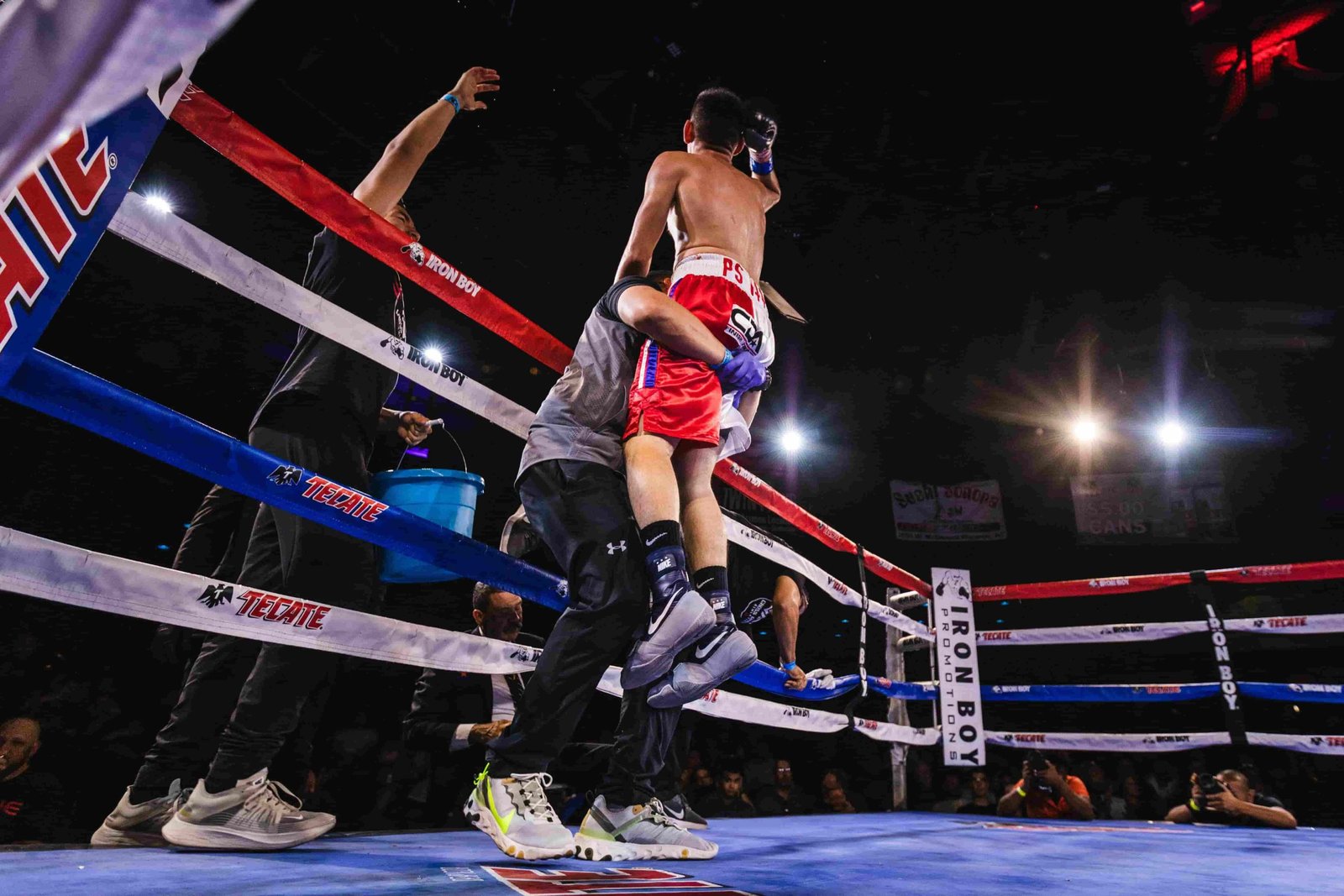Ever wondered how does a boxing ring work? It’s more than just a square platform—it’s a carefully designed arena that shapes the sport’s action, strategy, and safety. Learning how a boxing ring functions unveils intriguing details about its rules, structure, and scoring systems governing each match.
This guide explores the key elements that allow a boxing ring to function effectively and maintain order during matches. To begin, we will examine the ring’s boundaries, including its dimensions, ropes, and the critical role of the neutral corner. Afterward, we will analyze the fundamental rules that dictate what fighters are permitted or prohibited from doing within the ring. Finally, we will uncover the details of the 10-point must system, a scoring framework ensuring fair and strategic competition in every bout.
What Are the Boundaries of a Boxing Ring?
When exploring how does a boxing ring work, understanding its boundaries is essential. The ring isn’t just a stage; it’s a meticulously designed platform built to ensure fair play and safety.
- Dimensions and Size Regulations: Professional boxing rings typically measure between 16 and 20 feet on each side, while amateur rings can be slightly smaller. This size ensures ample space for movement while keeping fighters engaged.
- Ropes and Corner Posts: Four parallel ropes surround the ring, supported by corner posts. These ropes not only define the boundaries but also help fighters rebound strategically.
- Neutral Corner Concept: The neutral corner is a key element, serving as a space where fighters must retreat during knockdowns. This ensures fairness and avoids undue advantage.
- Canvas and Flooring: The ring floor, covered with a non-slip canvas, provides stability and reduces the risk of injury. Beneath it, padding absorbs impact, protecting fighters during falls.
- Ring Apron and Safety Measures: The apron, the area outside the ropes, serves as a buffer zone for additional safety, ensuring no one accidentally steps out.

What Are the Rules for Boxing Rings?
To understand how does a boxing ring work, it’s essential to grasp the rules that govern the action inside it. These regulations ensure a balance of fairness, safety, and competition for both fighters.
- Punching Zones: Legal strikes are limited to the front and sides of the opponent’s upper body. Hitting the back of the head or below the belt is strictly prohibited and can result in penalties.
- Role of the Referee: The referee plays a critical role in maintaining order, enforcing rules, and stopping the fight if safety becomes a concern. They also ensure fighters respect the boundaries and keep the match fair.
- Time Limits and Rounds: Professional bouts typically consist of 12 three-minute rounds, with one-minute breaks in between. Amateur matches often have shorter rounds and fewer of them.
- Fighter Conduct and Penalties: Unsportsmanlike behavior, such as holding, low blows, or excessive clinching, can lead to warnings, point deductions, or disqualification.
- Rope and Boundary Interaction: Fighters are not allowed to grab the ropes for leverage. If pushed against the ropes, the referee intervenes to ensure safety.

How many defenses are in boxing?
The 10-point must system is key to understanding how does a boxing ring work, as it determines round scoring. In this system, the winner of each round earns 10 points, while the loser typically gets 9 or fewer, depending on performance. Judges evaluate fighters using criteria like clean punch accuracy, defensive skills, and control of the ring (ring generalship).
Knockdowns, which are key events, often result in a one-point deduction for the fighter who hits the canvas. Similarly, fouls like low blows or intentional headbutts lead to point deductions, significantly impacting the overall outcome of the match. In rare cases where both fighters perform equally, judges may score the round 10-10 to reflect a balanced effort.
These rules ensure consistent and fair scoring, providing a structured framework to determine the rightful winner of every boxing bout.

